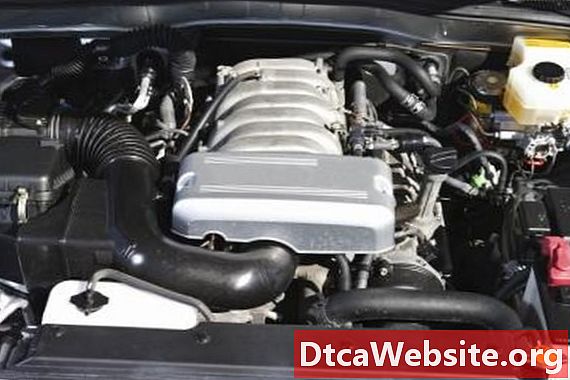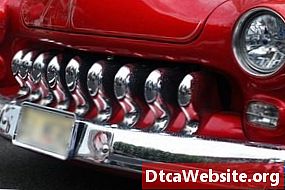
Contenu
Hydraulic power steering systems utilize a power steering pump and hydraulic fluid to provide power to the steering rack via pressure lines. Over time rubber and plastic components can degrade due to environmental exposure, and eventually leak. Low fluid levels will cause additional stress on the the pump and rack, and is often indicated by a whining sound when turning the wheel. To figure out if your power steering is leaking, examine the various components of the power steering system.
Step 1
Thoroughly clean your power steering pump and reservoir with a degreasing cleaner and rags. The power steering pump and reservoir are typically a single unit, and the actual location varies by vehicle. Spray down the reservoir, the lines and the bottom of the pump, wiping down the assembly until all grime and wet power steering fluid has been removed. Since power steering fluid is red, this provides an easy way to distinguish it from coolant (typically green,) oil (black) or washer fluid (typically blue or purple). For example, on the Chrysler 5.2 liter V8, the power steering pump is found in the front of the engine on the drivers side. The pump and reservoir are a single unit bolted to the engine block via a bracket, with a pulley connected to the crankshaft, and two high pressure lines that run from the pump below to the steering rack.
Step 2
Check the pressure line connections to the power steering pump to ensure they are not loose. Follow the power steering lines down from the pump to the rack itself, and check for leakage where the lines connect. If your power steering pump or lines have been replaced in the past, there is a chance that one or more line may be loose. Run your hands along the lines to see if you feel any tears or rips in the hoses, or any sharp kinks.
Step 3
Start your vehicle and slowly turn the steering wheel fully from left to right. Ideally if a helper turns the wheel, you can observe the steering pump assembly. Look for any bubbling fluid coming from a line, from the reservoir or the pump itself where the pulley attaches to the power steering pumps spindle. If there is a leak, you should see seeping fluid. A common source for a leak is the plastic reservoir itself; check any seams or joints along with the corners of the container for leakage.
Step 4
Remove the reservoir cap and repeat the turning the steering left to right if you have not detected any leaks. Check to see if there is any air in the system, which will be purged (the fluid in the reservoir will bubble and the air escapes since the cap has been removed) by turning the steering wheel. If you still do not see any apparent leaks, ensure the power steering fluid is topped off, and drive the car for a day and recheck. Repeat this process until you identify your leak, checking the fluid level in the reservoir to see if you are losing fluid.
Replace the leaking part or lines, once you find the leak. If your vehicle is older (perhaps 5-10 years old) it is best to simply replace the power steering pump and reservoir (often a single unit). Replacement is usually a simple process that requires a pulley puller to separate the pulley from the pump, then removing the bolts that hold the pump to the engine block. It is also a good idea to replace the pulley and belt since the pump is off to ensure all moving components are fresh.
Tip
- If you cannot find any leaks, but the power steering is not work properly, the pump itself or the steering rack may have malfunctioned. Also keep in mind if you have increased the size of your tires over the factory size, this will result in greater steering effort of your part due to the heavier tires, and is not necessarily a symptom of a failing power steering rack or pump.
Items you will need
- Degreasing cleaner
- Clean rags


